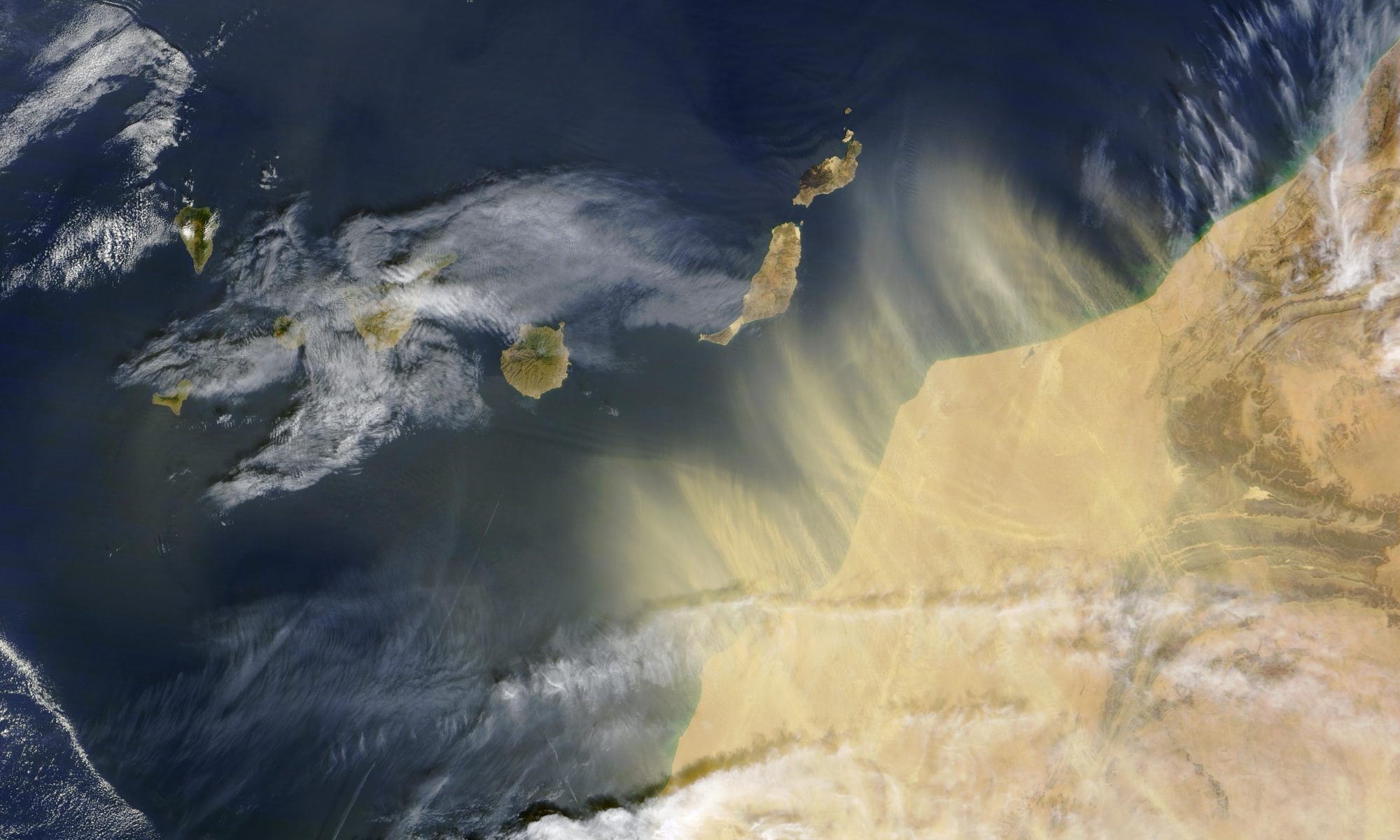Dust is an important component of the climate system as it has to the ability to alter precipitation patterns and surface temperature, is a key nutrient supply for much of the biosphere, and provides records of paleoclimate. Dust also matters in human environments, where it is a hazard to both health and transportation.
Two of my recent publications use a global climate model to evaluate the climate impacts of atmospheric dust. Over north Africa, and the Sahel region in particular, dust absorbs and scatters incoming sunlight, altering the energy balance of the atmosphere and reducing the rainfall the region receives. This is turn reduces plant growth and exacerbates droughts. The presence of dust in the atmosphere can also shift the entire tropical rainbelt north or south, though how much has likely changed through history. In both cases, there are interesting possibilities of feedback loops between dust, rainfall changes, and more or less dust as a result.
Along with the impacts of dust once it’s in the atmosphere, I’m also very interested in the processes that put it there, and how the emission of dust from the land surface varies in both time and space. Dust particles get picked up off the land surface by strong surface winds, but how much dust gets uplifted depends on many land surface characteristics like soil water and vegetation cover. Depending on the region, the season, the particular year, or the global climate, the variability of dust emission can be controlled by either the atmosphere or the land surface.
Dust is just one of the ways that the land surface and the atmosphere interact with each other, and it connects to many of the others like hydrology and agriculture. The representation of dust in climate models is rapidly becoming more sophisticated, and satellite records are reaching climate timescales, making this an exciting time to be studying dust.
